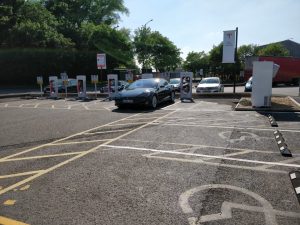One of the big reasons for electric vehicles gaining popularity in India in the last few years was one of the Indian government’s lucrative policies – Faster Adoption and Manufacturing of (Hybrid and) Electric Vehicle (FAME) scheme.
The first phase of the FAME scheme was introduced in 2015 which was followed by FAME 2 in 2019 for three years ending in 2022, which was later extended till March 2024.
The FAME policy incentivized EV owners with financial subsidies and greatly helped in fuelling the expansion of electric vehicles in India. However, once the FAME policy ended, there was much anticipation among EV buyers for an extension or the announcement of a new policy.
On 11th September, the government approved a new scheme called ‘PM Electric Drive Revolution in Innovative Vehicle Enhancement (PM E-DRIVE)’ to promote electric mobility in India. The scheme will come under the ambit of the Ministry of Heavy Industries.
The scheme has an outlay of Rs 10,900 crore (US $1.2 billion) over two years, which will be used to incentivize electric 2-wheelers (e-2Ws), electric 3-wheelers (e-3Ws), electric ambulances, electric trucks, and other emerging EVs.
Interestingly PM E-DRIVE scheme has excluded Electric 4-wheelers (electric cars, SUVs, etc) from its scope.
The scheme allocates Rs 500 crore for the deployment of e-ambulances. This is a new initiative of the government to promote e-ambulance for emission-free patient transport. The performance and safety standards of e-ambulances will be formulated in consultation with the Ministry of Health and Family Welfare, the Ministry of Road Transport and Highways, and other relevant stakeholders.
A sum of Rs 4391 crore has been provided for the procurement of 14,028 e-buses by State Transport Undertaking (STU) and public transport agencies. The demand aggregation will be done by Convergence Energy Services Limited (CESL) in the nine cities with more than 40 lakh population namely Delhi, Mumbai, Kolkata, Chennai, Ahmedabad, Surat, Bangalore, Pune, and Hyderabad. Intercity and Interstate e-buses will also be supported in consultation with states.
CESL is a green energy-focused venture under the Ministry of Power, New and Renewable Energy.
While allocating buses to cities/states, first preference shall be given to those number of buses of cities/states, which are being procured after scrapping old STU buses, through authorized scrapping centers (RVSFs) following the Ministry of Road Transport and Highways Vehicle Scrapping Scheme guidelines.
The trucks are a major contributor to air pollution. The scheme will promote the deployment of e-trucks in the country. A sum of Rs 500 crore has been allocated for incentivizing e-trucks. Incentives will be given to those who have a scrapping certificate from the approved vehicle scrapping centers (RVSF).
The scheme addresses the range anxiety of EV buyers by promoting in a big way the installation of electric vehicle public charging stations (EVPCS). These EVPCS shall be installed in the selected cities with high EV penetration and also on selected highways. The scheme proposes the installation of 22,100 fast chargers for e-4 Ws, 1800 fast chargers for e-buses, and 48,400 fast chargers for e-2W/3Ws. The outlay for EV PCS will be Rs 2000 crore.
Given the growing EV ecosystem in the country, the test agencies of the Ministry of Heavy Industries will be modernized to deal with the new and emerging technologies to promote green mobility. The upgradation of testing agencies with an outlay of Rs 780 crore under the aegis of the Ministry of Heavy Industries has been approved.

How an Electric Vehicle buyer can avail of the PM E-DRIVE Scheme?
Ministry of Heavy Industries is introducing e-vouchers for electric vehicle buyers to avail of demand incentives under the PM E-DRIVE scheme.
At the time of purchase of the EV, the PM E-DRIVE portal will generate an Aadhaar-authenticated e-Voucher for the buyer. A link to download the e-voucher shall be sent to the registered mobile number of the buyer.
This e-voucher will be signed by the buyer and submitted to the dealer to avail of demand incentives under the scheme. Thereafter, the e-voucher will also be signed by the dealer and uploaded on the PM E-DRIVE portal. The signed e-voucher shall be sent to the buyer and dealer through an SMS.
The signed e-voucher will be essential for OEM to claim reimbursement of demand incentives under the scheme.
Wrapping Up
The primary objective of the PM E-DRIVE scheme is to expedite the adoption of EVs by providing upfront incentives for their purchase, as well as by facilitating the establishment of essential charging infrastructure for EVs. The PM E-DRIVE scheme aims to promote EVs to reduce the environmental impact of transportation and improve air quality.
The scheme promotes an efficient, competitive, and resilient EV manufacturing industry in India. This will be achieved by incorporating a phased manufacturing program (PMP) which encourages domestic manufacturing and strengthens of EV supply chain.
This initiative of the Indian government is poised to address concerns regarding environmental pollution and fuel security as well as to make significant progress in promoting sustainable transportation solutions. This scheme along with its PMP, shall spur investment in the EV sector and associated supply chain. The scheme shall create significant employment opportunities along the value chain. There will also be employment generation through manufacturing and the establishment of charging infrastructure.
The article is written based on an official press release by the Indian Government and is edited for readability.






Add comment